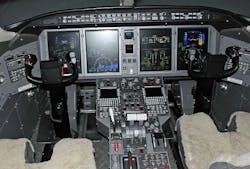Global military simulation and training market trending stable to downward through 2022
The global military training and simulation market is trending stable to slightly downward due to the sequestration on the U.S. Department of Defense (DOD) budget since early 2013. As the U.S. accounts for 68.4 percent of the world's total military training and simulation market, its progressive decline has led to an overall negative compound annual growth rate for 2013-2022, analysts say.
Fleet renewal has also slowed down across Western European countries owing to financial constraints as the consequence of defense expenditures unsteadiness.
Defense budgets in the U.S. and Europe, however, are expected to stabilize from 2018 onwards. Military spending and arms races across the Middle East, Central Asia, and Asia-Pacific, also are expected to increase.
Related: Simulation & training: expecting the unexpected
These factors will ensure that military training and simulation market revenues for air, land, and naval forces remain steady over the next 10 years. Driving revenues will be demand for training equipment as training service opportunities will remain relatively restricted in these regions.
The need for comprehensive military training and simulation solutions also will rise in Asia-Pacific, Latin America, and the Middle East, which are investing in defense assets and forces, looking to replace fighters, and boosting their maritime defense, analysts say.
Other regions also are keen to acquire new, high-end technology systems and distributed training. Price will be a big factor, analysts warn.
"End users are highly sensitive to simulation and training equipment lifecycle management costs," says Alix Leboulanger, a defense industry analysts at Frost & Sullivan. "Newcomers from emerging markets are bringing down training equipment prices and commercial companies are leveraging their IT expertise to gain market exposure. This has made leading military training and simulation providers face an incredibly competitive market."
To cope with those struggles, traditional suppliers could engage in merger and acquisition activity, diversify their product portfolio and service offerings, and focus on augmented training solutions of interest.
For more information contact Frost & Sullivan online at www.defense.frost.com.
